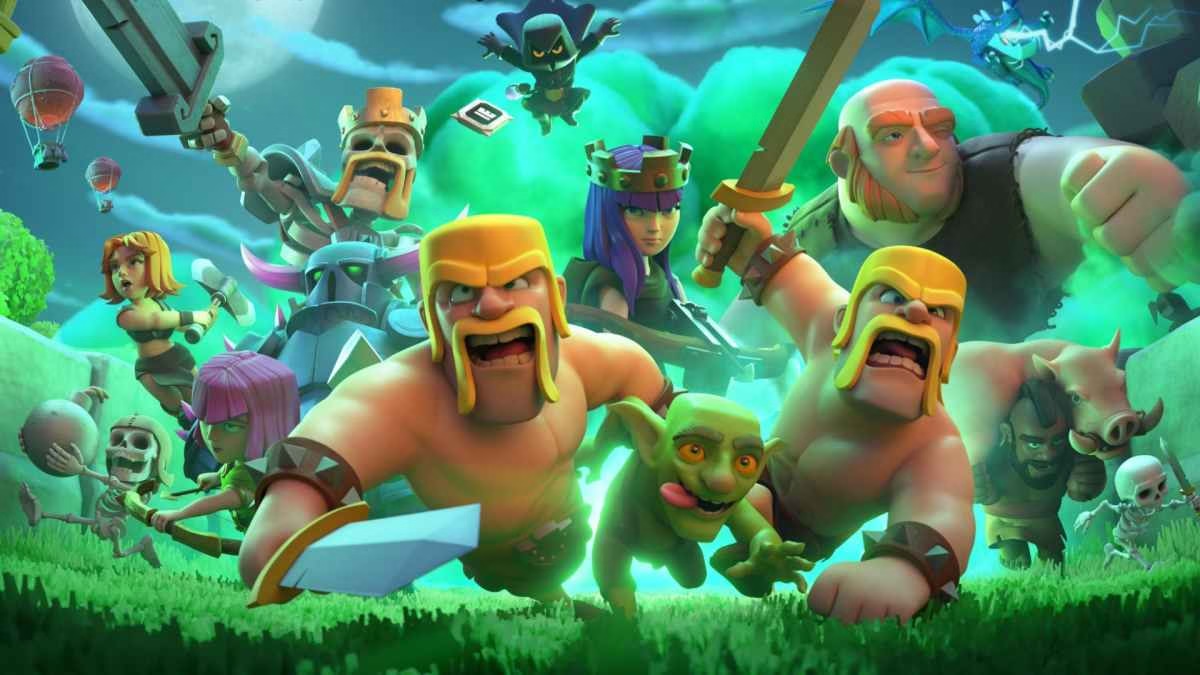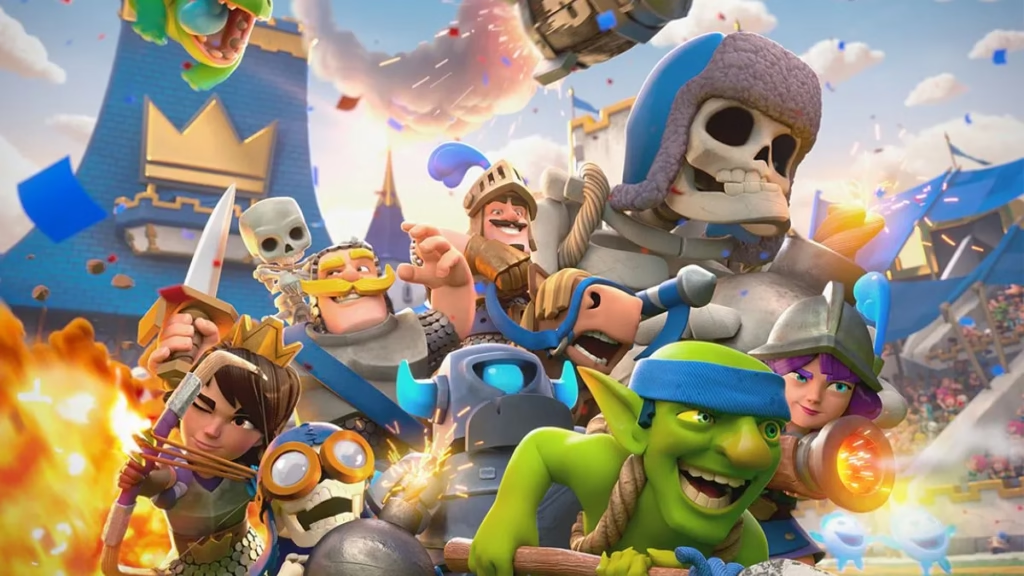
Clash of Clans, once a dominant force in the mobile gaming industry, is facing a decline that has left both players and industry experts puzzled. This article delves into the rise and fall of Clash of Clans, exploring the key success factors that propelled it to the top of the charts, the challenges it now faces in an increasingly competitive landscape, and the evolving user preferences that have contributed to its downfall. By examining the game’s in-game monetization strategies, community engagement efforts, and the developer’s response to its decline, we aim to provide insights into the factors shaping the future outlook of this once-thriving mobile game.
Introduction to Clash of Clans
Once upon a time, in the enchanted world of mobile gaming, Clash of Clans reigned supreme. Players worldwide spent countless hours strategizing, building their villages, and waging epic battles against rivals. But all good things must come to an end, and the once-mighty Clash of Clans is facing a decline. Let’s delve into the reasons behind the fall of this mobile gaming titan.
Overview of the Mobile Game Industry

The mobile game industry is a wild and ever-changing jungle, where trends come and go faster than you can say “game over.” With a plethora of options at their fingertips, players today are spoilt for choice. From casual puzzles to immersive RPGs, there’s something for everyone in the vast landscape of mobile gaming.
Rise to Dominance: Success Factors
Clash of Clans didn’t climb to the top of the gaming charts by sheer luck. Its strategic gameplay and captivating social features captured the hearts of players worldwide. Add to that a savvy marketing strategy that roped in new users faster than you can say “upgrade your town hall,” and you’ve got a recipe for success.
Strategic Gameplay and Social Features
Clash of Clans’ winning formula lay in its blend of strategic depth and social interaction. Players not only had to plan their attacks and defenses carefully but also forge alliances with fellow clan members to succeed. The sense of camaraderie and competition kept players coming back for more, creating a vibrant, interconnected community.
Effective Marketing and User Acquisition

Effective Marketing and User Acquisition
You couldn’t scroll through your social media feed without encountering an ad for Clash of Clans at its peak. Supercell, the brains behind the game, knew how to hook new players with enticing promotions and targeted advertising. The result? A massive influx of users eager to join the clash and carve out their virtual empires.
Competitive Landscape: Challenges Faced
But as they say, what goes up must come down. Clash of Clans found itself facing stiff competition in an increasingly crowded marketplace. New mobile games were popping up left and right, vying for players’ attention. To make matters worse, similar game genres started encroaching on Clash of Clans’ territory, posing a threat to its dominance.
Rise of New Mobile Games
The mobile game industry is a breeding ground for innovation, with new titles constantly pushing the boundaries of what’s possible on a smartphone. Players hungry for fresh experiences flocked to these new games, leaving established titles like Clash of Clans in their wake. Adapting to changing tastes and technologies became crucial for survival.
Competition from Similar Game Genres
To add insult to injury, Clash of Clans faced competition not just from new games but also from within its own genre. Games offering similar gameplay mechanics and social features began to steal a slice of Clash of Clans’ player base. The once-unbeatable fortress was now under siege from all sides, struggling to hold its ground in the face of relentless competition.
Changing User Preferences: Impact on Decline
As the tides of the mobile game industry shifted, so did player preferences. The rise of casual and hyper-casual games brought about a seismic change in what players sought from their gaming experiences. Instant gratification became the name of the game, leaving slower-paced titles like Clash of Clans struggling to keep up with the need for speed.
Shift Towards Casual and Hyper-Casual Games
Gone were the days when players had hours to spare building elaborate virtual kingdoms. Today’s gamers crave quick, bite-sized experiences that fit seamlessly into their on-the-go lifestyles. Casual and hyper-casual games, with their simple mechanics and addictive gameplay, became the new darlings of the mobile gaming world, leaving more complex titles like Clash of Clans in the dust.
Desire for Instant Gratification
In a world where attention spans are shorter than a goblin’s lifespan in Clash of Clans, instant gratification reigns supreme. Players want their victories fast and their rewards even faster. The slow burn of building up a village over weeks and months no longer held the same appeal. Clash of Clans’ strategic gameplay, while once a draw, now felt like a barrier to the instant thrills players craved.
And so, the once-mighty Clash of Clans found itself at a crossroads, grappling with a changing landscape and evolving player preferences. Will it rise like a phoenix from the ashes, or will it fade into mobile gaming history as a relic of a bygone era? Only time will tell. Until then, clash on, brave warriors, and may your villages stand strong in the face of adversity.In-Game Monetization Strategies: Effect on Player Base
Freemium Model and Microtransactions
Remember when you could play a mobile game without mortgaging your future? Yeah, those were the good old days. Clash of Clans took a swan dive into the deep end of the monetization pool with its freemium model and microtransactions. While some players didn’t mind throwing a few bucks here and there for gems, others felt like they were being pickpocketed in broad daylight.
Player Perception and In-Game Purchases
Players’ perceptions of in-game purchases can make or break a game. In Clash of Clans, the line between enticing offers and cash grabs blurred faster than a snail racing a cheetah. Some felt like they were getting value for their money, while others felt like they were one step away from selling their kidneys to upgrade their virtual villages. It’s all fun and games until your bank account starts crying for help.
Community Engagement and Retention Efforts
- Importance of Community Interaction
What’s a game without a community to rage with when you lose and cheer with when you win? Clash of Clans learned this lesson the hard way. The importance of community interaction cannot be overstated. When players feel like they’re part of something bigger than themselves, they’re more likely to stick around, even when the game starts showing its age.
- Challenges in Sustaining Player Interest
Sustaining player interest is like trying to keep a toddler entertained on a long car ride. It’s a constant battle. Clash of Clans faced challenges in keeping the spark alive as new games entered the scene faster than you can say “upgrade your walls.” Without fresh content and engaging events, players quickly got bored and wandered off to greener pastures.
Developer Response and Future Outlook
Updates and Feature Enhancements
Ah, the sweet smell of updates and feature enhancements – every gamer’s dream. Clash of Clans developers scrambled to breathe new life into their game with updates and shiny new features. Whether it was new troops, game modes, or events, they tried to keep players on their toes. But alas, the magic potion didn’t work its charm forever.
Adapting to Evolving Mobile Gaming Trends
In the ever-changing landscape of mobile gaming, adaptation is key. Clash of Clans found itself at a crossroads, trying to keep up with the latest trends while staying true to its roots. As new games offered innovative gameplay and sleek graphics, Clash of Clans had to decide whether to evolve or risk becoming a relic of the past. Only time will tell if they can rise like a phoenix from the ashes or fade into mobile gaming history.In conclusion, the decline of Clash of Clans serves as a poignant reminder of the ever-changing nature of the mobile gaming industry. As players shift preferences and new games emerge, even the most established titles must adapt to stay relevant. While the future may seem uncertain for Clash of Clans, the lessons learned from its downfall can guide both developers and players in navigating the dynamic landscape of mobile gaming.
Frequently Asked Questions
- Is Clash of Clans completely shutting down?
- What are some key reasons behind the decline of Clash of Clans?
- Can Clash of Clans make a comeback in the mobile gaming market?
- How are players and developers responding to the declining popularity of Clash of Clans?